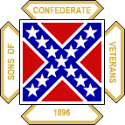|
WELCOME to www.CivilWarAlbum.com!
Online Since 1998
Assembled here is a collection of 22,083 modern photos and panoramas of Civil War sites. The photos (1950's - May 2020) and narratives were provided by the Webmaster and 170 contributors. Included are numerous wartime photos, as well as several official records, reports and maps.
I wish to extend a special Thank-you to the Contributors who have generously submitted their photos for display in the www.CivilWarAlbum.com Photo Albums. You all have done an excellent job and it is greatly appreciated. The Photo Contributors have made the Website what it is today.
1. Daily Life in the Ranks: Camp & Drill
Soldier Life in Camp
Everyday routines shaped the experience of Civil War soldiers. From pitching makeshift “dog tents” using bayonets, to heating food over shared fires, camp life required resilience. Soldiers spent long hours drilling in formation—discipline forged through repetition. Personal letters, quiet humor, and makeshift comforts gave the men a fragile normalcy in the chaos of war.
2. Arms & Ammunition: The Tools of War
Married to the Springfield & Enfield Rifles
Early in the conflict, many soldiers were issued outdated flintlocks and smoothbores. This changed with the introduction of the Springfield Model 1861 and the British-imported Enfield rifles. The Springfield’s .58 caliber rounds and 39-inch rifled barrel made it deadly at 500 yards. Confederate troops prized captured Union weapons—sometimes using the same ammo across both rifle types. Some of these arms saw use well into the postwar years.
3. From the Archives: Official Records & Communications
Voices from the War Department
Dive into the Official Records to explore authentic wartime documents. A striking example: Secretary of War Seddon’s Special Orders No. 301 (Dec. 22, 1864), which discusses cotton supply logistics amid rising wartime scarcities. These dispatches give modern readers a window into how both sides managed war economies under pressure.
Preserving history often goes hand in hand with preserving photographs and memories. For those interested in displaying Civil War memorabilia or family heritage items, modern tools like digital photo frames, electronic photo albums, and storage devices for pictures can be very helpful. At https://manuals.online/, you can find instruction manuals and user guides for many of these devices, making it easier to set them up and keep valuable images safe for future generations.
4. Historic Homes & Civilian Courage
Balfour House, Vicksburg: Shelter and Resistance
The Balfour House in Vicksburg became a place of refuge during the siege of 1863. Emma Balfour famously sheltered wounded Confederate soldiers in her home. After the surrender, Union General McPherson used the house as his headquarters. It also hosted the infamous Christmas Eve Ball of 1862, a bittersweet prelude to one of the war’s fiercest campaigns.
5. Battlefields Remembered: Broxton Bridge
The Battle of Broxton Bridge (Feb. 1, 1865)
As Union forces moved into South Carolina, Confederate defenders made a stand at Broxton Bridge. Though the bridge was initially held, it was soon flanked at Rivers’ Bridge the next day, forcing withdrawal and clearing the path to Columbia. Today, the site retains original earthworks and hosts annual reenactments that keep the memory alive.
6. Multimedia: Music of the Civil War
Soundtrack of a Nation Divided
Music played a vital role in maintaining morale. From battlefield ballads to campfire songs, collections like Songs of the Civil War (Columbia Records, 1991) and Divided & United (2013) reinterpret tunes such as “Lorena” and “Goober Peas.” Contemporary bluegrass and Americana musicians help bring these stories to life through haunting melodies and vivid lyrics.
|





